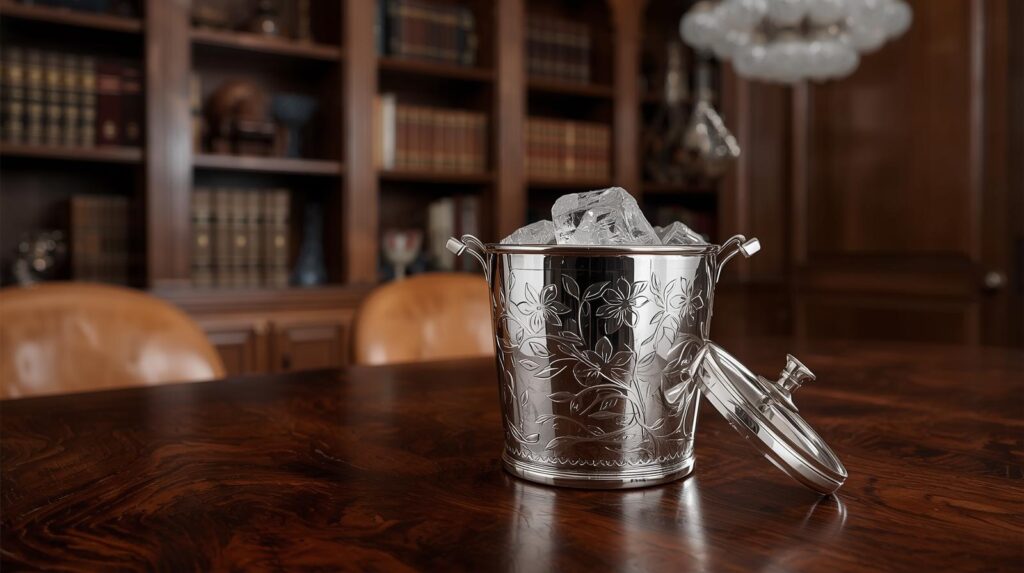You grab a frosty ice bucket at your summer barbecue—the cold mist tingles on your fingertips and the cubes clink like tiny bells. But as the sun climbs higher and laughter spills across the backyard you start to wonder: how long before your trusty bucket turns into a puddle of disappointment? It’s a detail most people overlook until their drinks go lukewarm and the party vibe melts away.
If you’ve ever found yourself eyeing your ice bucket and hoping it holds out just a little longer you’re not alone. There’s more to its staying power than meets the eye and the answer isn’t as simple as you might think. Let’s dig into what really determines the lifespan of your ice bucket—and how you can keep the chill going strong.

Factors That Affect How Long Ice Buckets Last
Several key elements determine how long your ice buckets deliver reliable performance and keep drinks chilled at your gatherings. Recognize what influences their longevity to get the most out of every fill.
Material and Build Quality
Material and build quality directly impact your ice bucket’s durability and ice retention. Stainless steel models resist dents, corrosion, and stains, making them common at restaurants and hotels. Double-walled, vacuum-insulated buckets slow thermal transfer, keeping ice solid longer than plastic or single-walled metal. Plastic ice buckets, like those at casual parties or picnics, can crack over time due to impacts or repeated freezing and thawing. Choose buckets with thick, seamless joints and tight-fitting lids for extended lifespan and better insulation.
Frequency of Use
Frequency of use links directly to wear and tear. Daily use, such as in catering services or busy households, exposes buckets to frequent handling, more cleaning cycles, and minor drops. Occasional use—reserved for anniversaries, holidays, or backyard cookouts—slows down physical degradation and keeps buckets looking newer. Consider how many times per year you reach for your ice bucket when estimating how long it might function without showing cracks, loose handles, or fading finishes.
Maintenance and Cleaning Practices
Maintenance and cleaning practices strongly influence ice bucket longevity. Hand-washing stainless steel with mild detergent prevents buildup and surface scratching, while automatic dishwashers can warp plastic in as little as 12 months of frequent cycles. Dry thoroughly after each use to avoid water stains or mildew, which can degrade finishes and odors. Store the bucket upside down in a dry area between uses to extend its life. Cleaners with harsh abrasives or bleach can erode insulation or metal, so always check the manufacturer’s recommendations printed on the bottom or in the user manual.
Average Lifespan of Different Types of Ice Buckets
Ice bucket longevity depends on what it’s made from and how often you use it. Each type brings a distinct balance of durability and performance.
Plastic Ice Buckets
Plastic ice buckets generally last 1–3 years with typical home use. Lightweight polycarbonate models crack or discolor fastest if exposed to sunlight or extreme temperatures. Heavier acrylic buckets resist impacts better, but repeated dishwashing cycles cause stress marks or fogging. Clear examples: outdoor parties, poolside gatherings, and children’s birthdays often accelerate visible wear, especially when dropped or stacked frequently.
Stainless Steel Ice Buckets
Stainless steel buckets average 5–10 years of frequent use in bars, restaurants, or home entertaining. Corrosion-resistant surfaces hold up through thousands of fills and scrubbings, although dents and scratches appear from impacts or improper cleaning agents. Double-walled versions maintain original luster much longer. For example, banquet halls replace only a fraction of their stainless ice buckets each decade, citing ruggedness and lasting visual appeal.
Insulated Ice Buckets
Insulated ice buckets—a popular choice for extended chilling—typically perform well for 3–8 years. Vacuum insulation, foam LINERS, and seamless lids minimize thermal loss, but breakdown of seals or accidental drops limit longevity. Frequent picnics, tailgate events, and travel increase chances of lost components, leading to gradual efficiency decline. Premium insulated models keep contents cold through long parties without exterior condensation—valuable where table surfaces or delicate decor require protection.
| Ice Bucket Type | Average Lifespan | Common Usage Examples | Primary Weakness |
|---|---|---|---|
| Plastic | 1–3 years | Poolside, kids’ parties, casual BBQs | Cracking, discoloration |
| Stainless Steel | 5–10 years | Bars, banquets, frequent entertaining | Dents, scratches |
| Insulated | 3–8 years | Picnics, travel, outdoor events | Seal failure, drop damage |
Signs It’s Time to Replace Your Ice Bucket
Spotting signs to replace your ice bucket ensures ice storage stays safe and drinks remain cold. Cracks, discoloration, and persistent odors point to issues in everyday use. For example, a cloudy line or spiderweb crack snaking along a plastic or acrylic rim often signals leaks that ruin insulation. Steel buckets, popular at catered events and family gatherings, sometimes sprout rust patches around seams—these patches compromise strength and chill.
Lids that no longer fit snugly, or handles wobbling as you carry drinks to the porch, could indicate the bucket’s structure has started to fail. Some insulated buckets lose their seal, so you notice thin puddles forming beneath—one tiny breach and the ice doesn’t last through a summer afternoon. If hand washing never removes that faint, musty smell—especially after outdoor parties—it suggests deep-set bacteria or mold, which no cleaning solution can solve.

Ask yourself: does your ice bucket struggle to keep cubes solid longer than an hour or two, even after following best practices? If so, hidden damage or aging insulation could be at fault. Guests gently ribbing you about tepid lemonade or watery cocktails often notice performance dips before you do, especially during reunions or holiday celebrations.
Keep in mind, holding onto a timeworn ice bucket—maybe one passed down at family picnics or carried from college dorm to first apartment—carries sentimental weight. Yet, hanging on too long risks compromising food safety. According to NSF International, cracked and worn plastic invites bacterial growth that’s hard to detect and even harder to clean (NSF.org, 2022).
When you spot stains, cracks, wobbly handles, or fading performance, it’s probably time to trade nostalgia for a new model. If you find yourself apologizing for room-temperature drinks more often, your ice bucket might be hinting that its party days are over.
Tips to Extend the Lifespan of Your Ice Bucket
Handle your ice bucket with consistent care to keep it in peak condition. Always carry it using both hands, especially if it’s filled—single-handed carrying often leads to stressed joints or dropped handles. Dry your bucket thoroughly after each use, since trapped moisture speeds up rust in stainless steel or encourages mold in plastic. Store it upside down in a ventilated space to discourage lingering odors and keep bacteria at bay.
Clean your bucket only with mild soap and a non-abrasive sponge. Scouring pads leave unsightly scratches on metal surfaces and weaken fragile plastic. Rinse away soap residue since buildup creates film over time. If your bucket has a removable liner—common in insulated models—take it out and let it dry separately.
Resist the urge to use your ice bucket as a makeshift pitcher, planter, or scoop holder. Buckets purpose-built for ice chilling lack the durability for other tasks, so repurposing them speeds up scratches and dents. If you’re tempted to serve popcorn or chips in your stainless steel bucket at a party, remember that grease and salt are tough to clean and degrade even the best finishes.
Check the seal on insulated ice buckets regularly. A loose or cracked seal can cut insulation efficiency in half—a key reason for rapid ice melt at outdoor gatherings. If you notice your bucket sweating more than usual, inspect the base for hairline cracks; even small fissures compromise insulation. When unsure, test it by filling with water and checking for leaks over a couple of hours.
Choose storage wisely when your event ends and guests are gone. A cupboard next to a heat source warps plastic buckets, while damp basements encourage mold on all surfaces. Find a cool, dry shelf instead.
Maintain your ice bucket by following guidance from trusted sources such as the Food and Drug Administration’s cleaning recommendations for food-contact items and manufacturer’s care tips, like those from OXO and YETI. Your attention to detail adds years to your bucket’s useful life, keeps your drinks colder longer, and prevents the disappointment of lukewarm sips on sweltering days.
Conclusion
Choosing the right ice bucket and caring for it properly means you’ll always have cold drinks ready for any occasion. Whether you prefer stainless steel for its durability or go with a lightweight plastic model for casual get-togethers your attention to maintenance makes all the difference.
Keep an eye on signs of wear and don’t hesitate to upgrade when needed. With the right approach your ice bucket will stay reliable and keep the party going for years to come.
